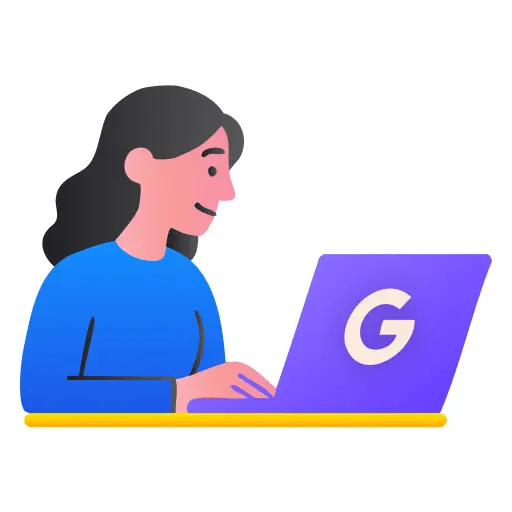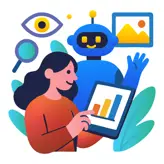
Why Small Businesses Need to Think Beyond Google & Build Brand
Published May 27, 2025
This week, we welcome Preeti Gupta to Sitebulb who provides tips for small brands and website owners to survive in the evolving search landscape.
Think about the last time you searched for something online. Whether it was buying a small kitchen oven, learning technical SEO, or getting personalized advice, where did you go for answers?
Maybe you checked Reddit for opinions, asked ChatGPT for a tailored response, or searched YouTube for a tutorial. The reality is that search has evolved—Google is no longer the only place people go for information.
This article explores why brands need to think beyond Google and meet customers where they actually search. By the end, you’ll have a clearer idea of how to refine your strategy and build a presence across multiple platforms.
Contents:
- Searching before the search engines
- Searching for information today
- Why brands need to think beyond Google
- How to build a brand presence outside of your website
- Final words
Searching before the search engines
Before search engines, people relied on traditional sources like libraries, newspapers, TV, radio, and even word-of-mouth to stay informed.
Access to information was slower and more limited—my dad told me that only a few families in his village had TVs, and my mom got to know about fashion trends months later through Bollywood movies and magazines.
The arrival of search engines changed everything, making information instantly accessible and allowing people to form online communities. It was a huge turning point in how we consumed information.
Searching for information today
The way people find information today has completely changed. While Google remains widely used (in fact, Google searches continue to grow), people increasingly turn to platforms like TikTok, YouTube, Reddit, and AI chatbots for answers.

Social media, originally meant for entertainment, has evolved into a major search tool—YouTube is recognized as the second most popular search engine, and TikTok is a go-to for Gen Z. In fact, 51% of Gen Z users prefer TikTok over Google for search.
However, different generations have different search behaviors. Baby Boomers, Gen X, and some Millennials still favor search engines, occasionally using social media or voice search. In contrast, Gen Z and Gen Alpha often begin their searches on social platforms and AI tools. My cousin, for example, uses YouTube and Instagram for advice, ChatGPT for homework, and Reddit for community-driven discussions.
There’s also a growing sentiment that Google is becoming less useful—42% of people in a Vox Media study believe search engines aren’t as helpful as before. Meanwhile, AI chatbots like ChatGPT, Claude, and Gemini are making search more personalized.
With so many ways to search, businesses need to adapt to this fragmented search landscape—or risk being invisible where their audience is actually looking.
Why brands need to think beyond Google
SEO works best when it supports and amplifies other marketing efforts, rather than standing alone. The brands that thrive today don’t rely solely on Google; they build their presence across multiple platforms, meeting their audience where they are searching.
If your business is only focused on rankings, it’s time to think bigger. Keep optimizing for search, but also start creating content on other platforms where your customers are actively searching and engaging.
How to build a brand presence outside of your website
Building a brand presence involves understanding your audience’s searching habits, deciding what platforms to pursue, and then creating content according to it. Apart from the organic stuff, you can also do paid activity. Finally, you’ll need to track performance and scale once you’re established.
1. Understand who your audience is and their searching habits online
From what I understand and have done for myself and my clients, it’s essential to cultivate a deep knowledge of who your ideal audience is and what they want to see. This is a crucial step because I have seen a lot of people confused about who their target audience (or Ideal Customer Profile) is.
As a business owner, I have struggled a lot with it. What helped me was to sit down and ask myself questions. The other thing that helped me was talking with people.
What does this mean for you? It means that you need to be clear on things like:
- Who do you want to serve?
- Where does your target audience spend their time?
- Where do they search for information?
- Their demographics, and more.
The best way for that to happen is to talk with your existing customers. And if you can, you can also talk with your ideal clients because this will give you a lot of insights.
The other way to understand what your customers do online is to use an audience research tool like Sparktoro. It will help you find out all the phrases your ideal audience searches for, what social media platforms they are more likely to be on, what podcasts they listen to, people they follow and more.
Just add the desired keyword into the search box, and when you click on search, it gives you a bunch of information. Things like what websites these searchers visit, what keywords they search for, what is their demographic information, what social accounts they follow, and more.
![Screenshot of SparkToro Dashboard page that shows results for the keyword Product-led growth Preeti Gupta Preeti Gupta 10:45 17 Mar [Alt text] Semrush repurposing their infographic post from X to LinkedIn Turn on screen reader supportTo enable screen reader support, press Ctrl+Alt+Z To learn about keyboard shortcuts, press Ctrl+slash](/media/5897/image6.png)
Scrolling down, it will give you data about the domain authority of all these websites that people visit. I especially love the hidden gems it shows in each section.

I would advise that you perform the search with a bunch of different search terms. You can also find information by not just the keywords, but also the website, and the words they have in their bio. I would recommend playing with it to get a variety of data.
Once you know who these people are and what kind of searching habits they have, it is time to prioritize which mediums you should create content on first. Because trust me, you don’t want to jump on all the platforms at once (even if you have all the money and resources).
2. Decide what platforms you want to pursue
In step 1, you should have found the top platforms your customers are active on. Now, from that list you want to select the top one or two platforms that are most popular among your audience.
There are a lot of platforms and content types that you can pursue. Here are my general observations about social media platforms:
- LinkedIn works best for B2B companies who are looking to target professionals.
- Instagram is a visual platform and it works great for B2C brands. But I have also seen B2B brands on it.
- Pinterest has a very different vibe and may not work for B2B brands. It is very visual and works best for industries like home decor, entertainment, makeup, and more.
- Platforms like Twitter and similar – Threads, Mastodon, and Bluesky – are best when it comes to customer support, short news, and updates. So I think both B2B and B2C can benefit from it.
- YouTube is great for most brands because it’s the second biggest search engine.
Here are some of the alternative channels/content formats you can explore (other than articles):
- Newsletters are great because they allow you to build your email list and keep your brand visible in people’s inboxes.
- Building a community through channels like Slack and Discord. I should also mention going live on platforms like YouTube and Clubhouse.
- Participating in forums like Quora, Reddit, and other specific industry ones.
- Doing webinars, especially with industry experts.
- Podcasts—both video and audio are another great way to stay in touch with your audience. 76% of brands launch podcasts to establish authority, 64% focus on brand positioning, and 60% aim to expand their audience.
Some platforms act more like search engines (YouTube, Quora, Reddit, and even Substack) because users are not just consuming content produced by others, but they’re actively looking for answers through the platform’s robust search functionality. Other platforms rely more on algorithmic feeds (LinkedIn, Twitter).
The social media platforms and the content formats you end up choosing will be dependent on the user research you do.
Also, these platforms are just here to kickstart your thinking. You might see that your audience is on a platform like Twitch, so you want to be able to create a strategy for that.
Once you’ve identified where your audience spends time, the next step is making sure that you’re not spreading yourself too thin.
3. Start small by focusing on 1-2 things
Choose the top one or two platforms that are most important for your brand according to all the research you have done above.
When I talk with brands about expanding their digital presence, one of the things they want to do is to create content on all platforms at once. They believe this will allow them to capture the audience from all sides.
While this sounds great on paper, I don’t recommend it! This is because it’s gonna be a lot of work at the start. Not to mention things will escalate quickly, and this is what you’ll end up looking like:

To save you from this, I recommend choosing the top 1-2 things. For example, creating content on LinkedIn, and creating videos on YouTube. Or, if two platforms are too much for you, you can try mastering one first.
4. Create content tailored to each platform
Content that works on LinkedIn might not work on Instagram. And we also need to be reminded that social media platforms are very different from how SEO works.
This is where we need to create content that is tailored to each platform. Sure it is a lot of work, but it’s worth it.
For example, Semrush creates informational content on their YouTube channel.

Apart from this, they share memes and infographics on their Twitter account.


The other thing they do is to repurpose their content from different platforms. For example, they repurpose their Twitter posts and share them on LinkedIn.

This brings me to repurposing content. I believe it’s a great way to reach your audience from multiple angles because let’s face it: your customers might not like consuming your content in just one way.
To test my theory about repurposing, I did a test. I have an article on my website that covers ‘what is x’. And this article is getting good traffic from searches, but I figured that maybe not everyone wants to read an article. Some people might appreciate a video version of the post.
And that’s what I did. I created a video on the same topic. It was much more visual and my theory was proven correct because this video is now getting a lot more views than the article. Not to mention that I am effectively capturing more SERP real estate.
5. Engage and build relationships
The brand-building journey doesn’t just stop at the posting phase, rather, it’s just the start. A huge part of social media is to get real with people. To build 1:1 relationships.
This means engaging with your audience when they comment on your post, by replying to their comments, starting a discussion, and adding links to further information.
Another interesting thing to note is that people these days expect brands to connect with them. As much as 64% of consumers want brands to connect with them. For example, I see big brands replying to posts made by other people, and even reposting them.
6. Explore the paid stuff
Building your brand doesn’t have to be limited to organic activity. If you have the resources, then you should explore the paid stuff. Things such as sponsoring videos, events, newsletters, and even running ads on platforms like Google, Bing, Facebook, and even Reddit. For example, one early-stage founder I talked to said that Reddit ads worked well for them.
Another aspect of this is influencer marketing. I see brands sending PR packages to influencers who then post about them on their social media channels.
The other thing is that a lot of times brands do things that are not profitable for them, but it helps them create an affiliation with the people their audience likes. This not only generates awareness but also makes people trust the brands.
7. Track performance and double down on what works
When it comes to tracking your performance, it gets very confusing because you want to track everything. The other thing is that most of the metrics are vanity, meaning that you can get millions of likes and still don’t get a single sign-up.
This is where setting a goal helps. What exactly are you creating this content for? What is the reason behind you sponsoring this newsletter?
A lot of brands don’t expect conversions from brand awareness. At the end of the day, it’s all about how you’re setting goals. I would recommend looking for genuine feedback (apart from any other metric that you’re looking to track). That way, you’re not relying on likes and views, but real feedback from your viewers.
From there, find what kind of content works and then double down and create more of it.
The last thing to this whole process is testing and iterating. I am always testing; for example, in my testing, I found out that carousels work better than text posts on LinkedIn (although videos are working well at the time of me writing this).
8. Scale once you’re established on one platform
Once you’re “established” on one platform, it’s time to expand your digital brand/web presence. For example, if you were creating LinkedIn content and you feel like it’s going well after giving it some time, maybe start making YouTube videos.
Or start a podcast alongside your newsletters. The list is endless!
Final words
Google is still the OG place where people search. At the same time, the way people are searching has changed a lot in recent times. It's because they're not just using Google anymore, they're using all sorts of platforms to get what they need. This means that in order to reach potential customers effectively, you have to be where they are.
Think about this: If your Google traffic disappeared tomorrow, would people still be able to find and engage with your brand?
You might also like:

Sitebulb is a proud partner of Women in Tech SEO! This author is part of the WTS community. Discover all our Women in Tech SEO articles.

Preeti Gupta is a product-led growth consultant at Packted. She loves talking about SEO, product-led growth, content, and user experience on LinkedIn and YouTube. She has contributed to Moz and has spoken at BrightLocal’s Local SEO for Good. When she isn't working, you can find her trying recipes, traveling, practicing her typing skills, and singing songs.
Articles for every stage in your SEO journey. Jump on board.
Related Articles
 SEO for Growth Case Study: Revolutionizing a Saturated Market
SEO for Growth Case Study: Revolutionizing a Saturated Market
 Why Branded Queries Matter Now More Than Ever
Why Branded Queries Matter Now More Than Ever
 LLM Brand Visibility: What Does AI Think Your Brand Does?
LLM Brand Visibility: What Does AI Think Your Brand Does?
 Sitebulb Desktop
Sitebulb Desktop
Find, fix and communicate technical issues with easy visuals, in-depth insights, & prioritized recommendations across 300+ SEO issues.
- Ideal for SEO professionals, consultants & marketing agencies.
Try our fully featured 14 day trial. No credit card required.
Try Sitebulb for free Sitebulb Cloud
Sitebulb Cloud
Get all the capability of Sitebulb Desktop, accessible via your web browser. Crawl at scale without project, crawl credit, or machine limits.
- Perfect for collaboration, remote teams & extreme scale.
If you’re using another cloud crawler, you will definitely save money with Sitebulb.
Explore Sitebulb Cloud
 Preeti Gupta
Preeti Gupta


